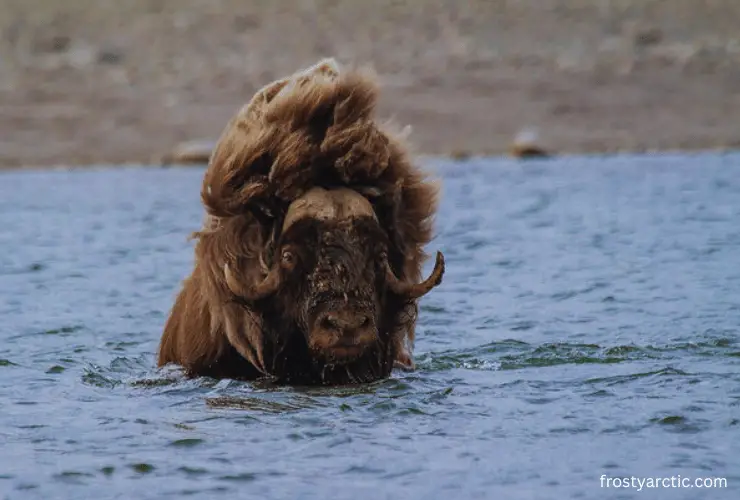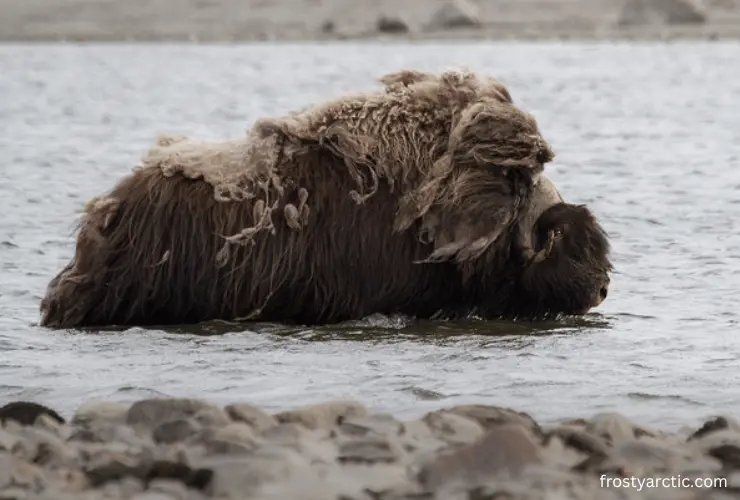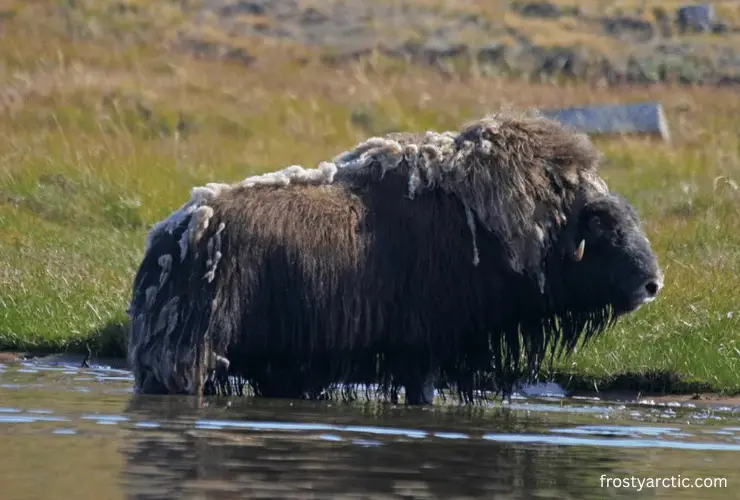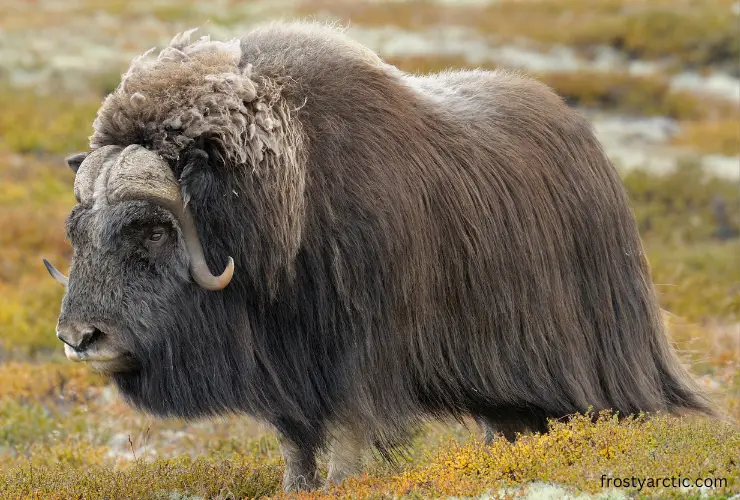Musk oxen, though not known for their aquatic abilities, can indeed swim. They are not great swimmers or built for long aquatic excursions. Water isn’t their preferred habitat, but these robust Arctic animals will wade through rivers and shallow bodies of water to reach their destination or escape predators when necessary.
“Can Musk Ox Swim?” might be a surprising query, given that we typically don’t associate these thick-coated, land-loving Arctic creatures with aquatic abilities.
However, the Arctic region is not only characterized by icy landscapes and snowy plains, but also spread with water bodies. As inhabitants of such an environment, musk oxen have adapted in fascinating ways. Join us as we dive into the world of musk oxen and their swimming abilities.
Why Do Musk Ox Swim?

The Arctic environment that musk oxen inhabit is not solely composed of vast stretches of land. It also has numerous bodies of water, such as rivers, lakes, and ponds. Musk oxen have no choice but to swim occasionally to navigate this terrain, especially during migrations.
Another reason why musk oxen might take to the water is to escape predators. While they are powerful animals capable of defending themselves on land, sometimes the best course of action is a quick retreat. Swimming to an island or across a river can help musk oxen distance themselves from predators like wolves or bears.
How Fast Can Musk Ox Swim?
Musk oxen are not famed for their speed in the water. While they are capable swimmers, they aren’t built for aquatic speed like dolphins or seals.
Their primary strategy while swimming is endurance over speed. While no specific speed measurement is available, their swim is characterized more by steadfast determination than quick movement.
Swimming Vs. Walking: A Comparison
On land, a musk ox can reach speeds of up to 37 miles per hour in a sprint, as reported by the Encyclopedia of Life. However, in water, they’re significantly slower. Given their large, bulky bodies and short legs, they’re better suited for stability on solid ground than for propulsion in water.
How Deep Can Musk Ox Swim?

Musk oxen are not known to be deep divers. They’re not like whales or seals, animals that plunge to incredible depths in search of food or to escape predators.
Musk oxen are primarily terrestrial animals, and while they can swim, their interactions with water are usually at relatively shallow depths.
While no definitive depth measurement is documented, the Alaska Department of Fish and Game’s observations suggest that musk oxen typically stay close to the surface when swimming across bodies of water.
Can Musk Ox Breathe Underwater?
Musk oxen cannot breathe underwater. Unlike certain aquatic creatures like fish or semi-aquatic mammals like dolphins or seals, they do not possess gills or other respiratory adaptations for underwater breathing.
They usually keep their heads above water while swimming. This keeps their respiratory tract clear and allows them to breathe oxygen without interruption.
Watch this video: https://www.youtube.com/watch?v=ZBbVHCsrmx8
Biological Adaptations That Help Musk Ox Swim
Let’s explore the unique features that enable the musk ox to navigate the icy waters of the Arctic.
● Bulky Body
One of the key adaptations that aid musk oxen in swimming is their large, bulky bodies. While a hindrance to speed, this size provides natural buoyancy, which helps the musk ox stay afloat.
● Double-Layered Coat
The musk ox’s coat, called qiviut, is another crucial adaptation. It is one of the warmest furs in the animal kingdom and has two layers: a long, coarse outer coat and a dense, woolly undercoat. This coat provides critical insulation in the icy waters of the Arctic.
● Short, Strong Legs
The musk ox’s short, muscular legs provide steady propulsion in water. Their strong legs, adapted for stability on land, help them navigate waters slowly but persistently.
Can Musk Ox Eat Underwater?

Musk oxen, like other terrestrial mammals, do not eat underwater. They’re not equipped with the specialized adaptations necessary for underwater foraging, like those found in various aquatic and semi-aquatic animals.
According to the Quaternary Science Reviews, their diet primarily consists of grasses, sedges, and willows, which they forage on land.
Musk oxen cannot breathe underwater, which heavily influences their inability to eat underwater. To feed, an animal needs to breathe simultaneously, which is not feasible for musk oxen in an aquatic environment.
Musk oxen have adapted to the Arctic’s harsh conditions, feeding on the region’s sparse vegetation. While they migrate in search of food, swimming across bodies of water if needed, their feeding happens on terra firma.
According to National Geographic, even in winter, musk oxen use their strong hooves to break through snow and ice to reach the vegetation beneath, never needing to seek food sources in the water.
Wrapping Up
So, do musk ox swim? Though they can, musk oxen aren’t great at it. These creatures sometimes cross the chilly Arctic waters for survival, migration, and evading predators.
Although their swimming abilities may not match those of aquatic animals, their steadfast endurance, unique physical adaptations, and double-layered warm fur serve them well in their watery endeavors.
However, it’s important to remember that musk oxen are terrestrial animals. Their interactions with water remain occasional and necessity driven.



1 thought on “Can Musk Ox Swim? [Explained]”